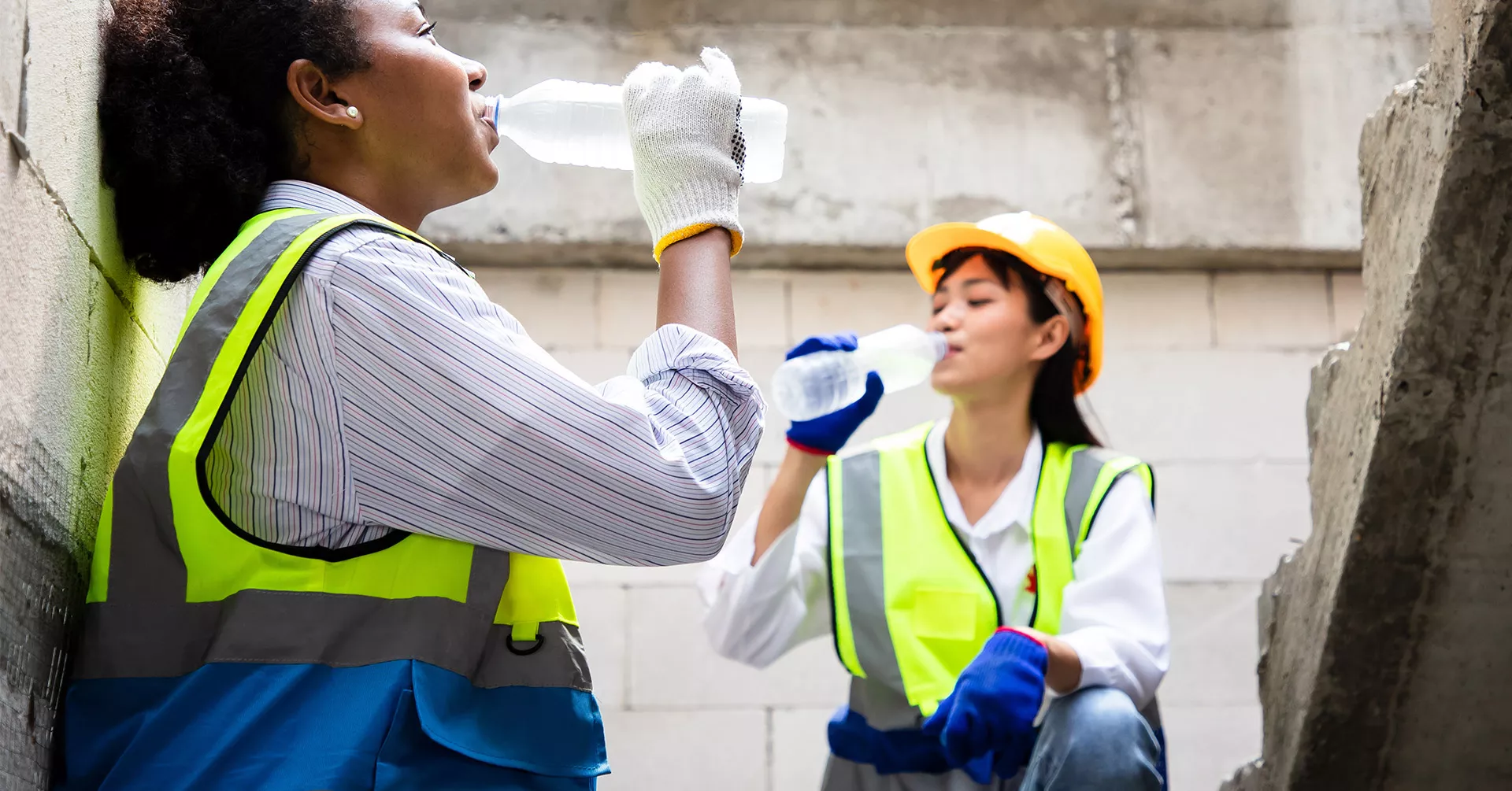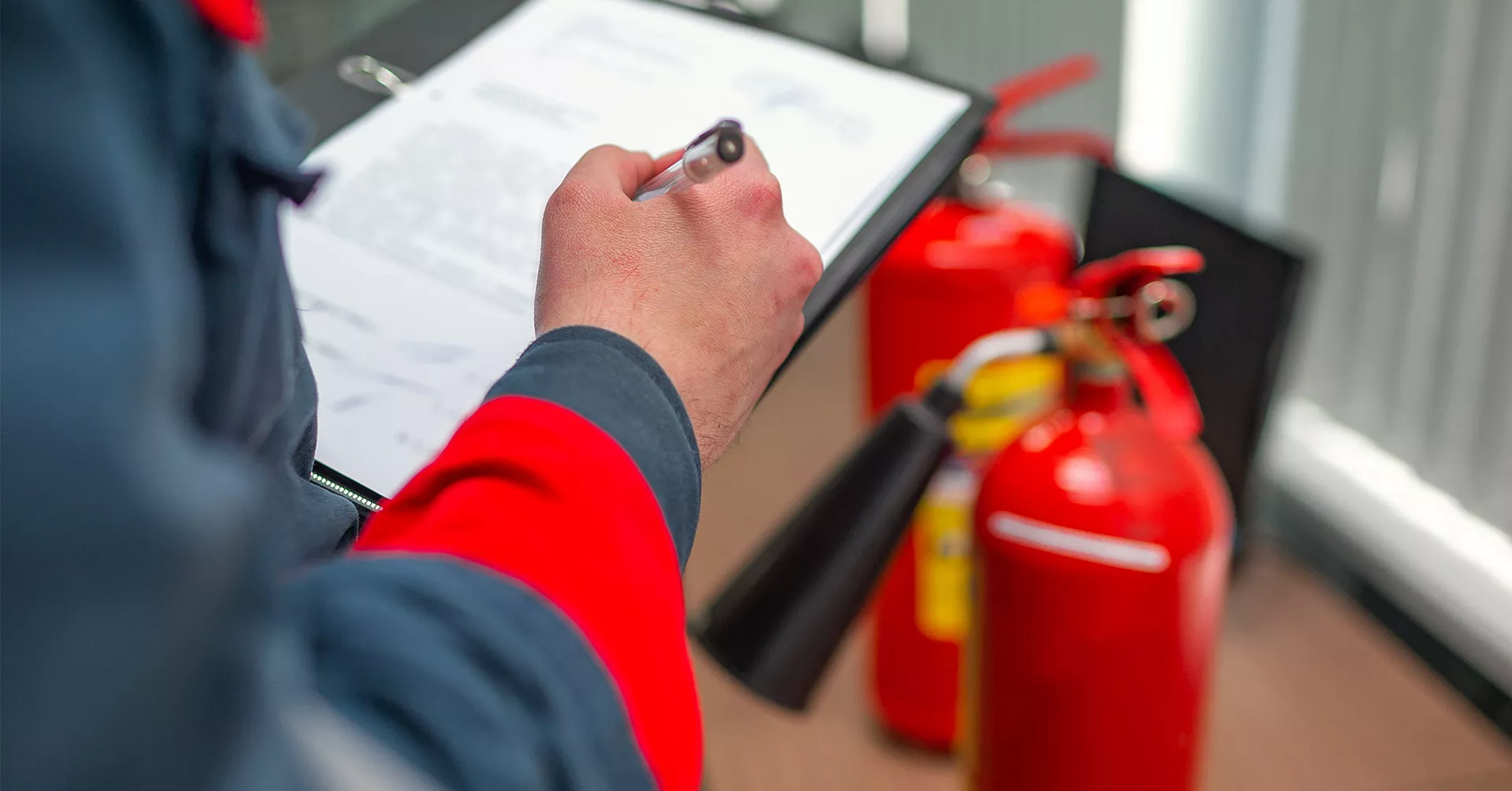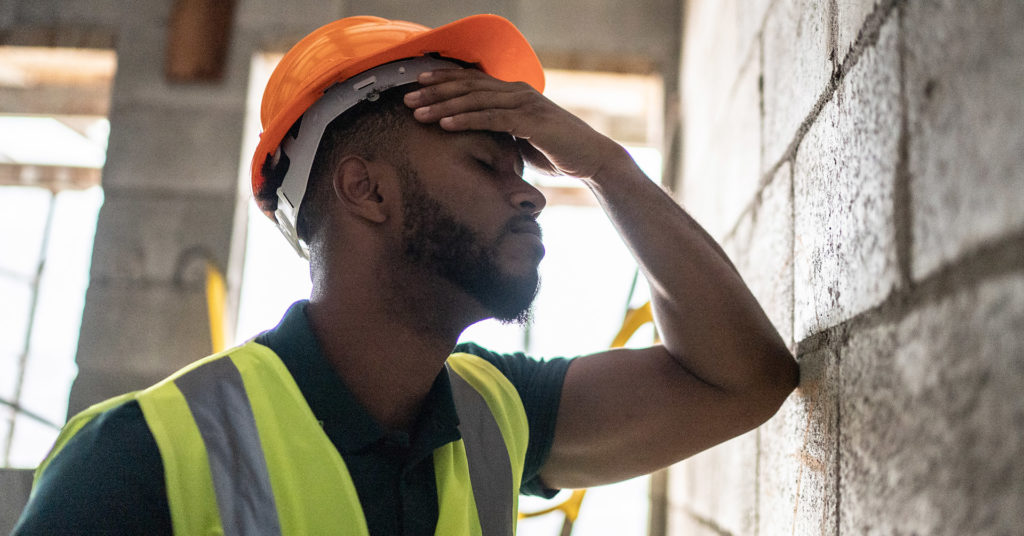
Heat Stress Prevention in the Workplace
Learn about heat stress prevention and the steps you should take to keep your employees cool and safe during excessive heat.
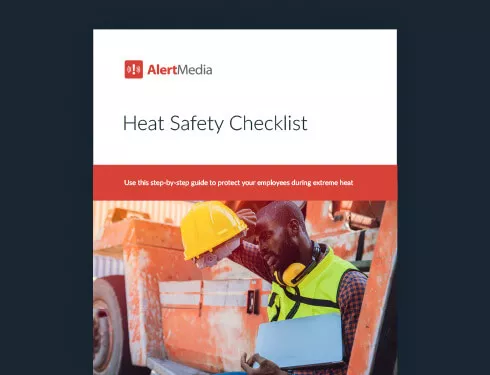
Extreme heat can be a dangerous work hazard with serious implications for worker safety. On average, hundreds of heat stress fatalities occur in the U.S. each year, and with more extreme heat in the forecast, preparing your employees for hot weather work is going to be a top priority.
Currently, protecting your employees from heat stress falls under the Occupational Safety and Health Administration’s (OSHA) General Duty Clause and your overall duty of care to protect employees from undue harm. Some states—California, Minnesota, and Michigan—have their own laws. But OSHA is working on new regulations related to heat safety and injury prevention that would put formal guidelines on how to handle heat safety in a work environment.
But with a few simple steps, you can reliably prevent heat stress and heat illness in the workplace. Keep reading to learn more about heat stress and how to prevent it during the lengthening periods of excessive heat your business faces.
What Is Heat Stress?
Heat stress occurs when someone is exposed to extreme heat for too long without the ability to cool down. It can lead to heat-related injuries like heat cramps, heat rash, heat exhaustion, and heat stroke. If left untreated, heat stress can even lead to death.
When you know that extreme heat conditions are likely, you can take action to prevent dangerous exposure for your workers. Our comprehensive heat safety checklist includes an overview of the heat advisory, watch, and warning conditions. By tracking these extreme heat alerts from your local news or threat intelligence partner, you can take appropriate—and necessary—steps to protect your people from possible heat stress before imminent danger.
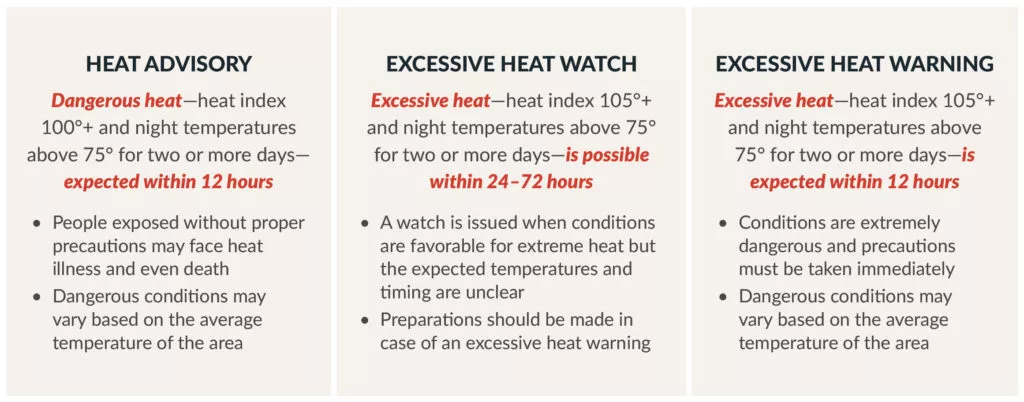
For a more complete list of safety procedures, download the Heat Safety Checklist.
The signs of heat stress
You and all your employees should know the signs of heat stress so they can identify and manage it immediately. The longer a person goes without assistance in excessive heat, the more likely they become seriously ill. Here are some of the symptoms of heat stress to look out for:
- Headache
- Fatigue
- Dizziness
- Confusion
- Muscle pain
- Muscle spasms
- Elevated heart rate
- Heavy sweating
- Hot, dry skin
- Nausea/vomiting
- Fainting/unconsciousness
Certain medical conditions are risk factors for heat stress and related heat illnesses. Employees with heart disease, high blood pressure, or those taking certain medications should take extra precautions with heat exposure.
If your employees show signs of heat illness, especially heat stroke, get them medical attention immediately.
How to Prevent Heat Stress
While heat can be hazardous, preventing heat stress isn’t complicated. There are a few simple things, widely recommended by organizations like OSHA and NIOSH, that you can do to help keep your employees cool while they work and avoid the risk of heat stress.
Setting up these preventive measures is a great way to care for your employees working in hot environments and get ahead of any upcoming OSHA requirements. Here are some fundamental heat safety tips.
Change your work schedule
One easy way to prevent heat stress is acclimatization—ensuring your employees aren’t working during the highest heat levels. If possible, shift work schedules so work happens in the cooler part of the day, such as earlier mornings or later evenings. If you do have to work during the highest heat levels, acclimatize your employees to the temperature slowly over a few days so they can adjust.
It’s also a good idea to schedule every employee to work with a co-worker present. Lone workers are more susceptible to missing the signs of heat stress, and having a buddy system means someone is always watching out. It can also be a good idea to train your employees in first aid so they’re prepared to assist if their buddy shows signs of heat stress.
Shade & rest breaks
Providing shaded areas (or, even better, indoor spaces or vehicles with air conditioning) where outdoor workers can take frequent breaks and cool off is critical to maintaining safe body temperatures.
Direct sunlight can raise the temperature in the work area by upwards of 10–15 degrees from the recorded temperature. Heat index and recorded temperature alone are not always good indicators of how your employees will fare in high temperatures. Use a wet bulb globe temperature monitor to get a more accurate reading of the environmental temperatures your employees will be working in.
Create a schedule for mandatory rest periods where workers can spend time in the shade or cool areas. Give your employees an area with good ventilation, air conditioning, or at least air movement or other engineered temperature controls so they can cool down. This precaution goes for employees working inside in hot conditions, too, like those often found in workplaces with heat sources like factory furnaces or bakery ovens.
Water
Preventing dehydration is a literal lifesaver during extreme heat. Heat-related illnesses like heat cramps and heat exhaustion result from dehydration on top of high body temperature. When your employees work through physical activity and heavy sweating without plenty of fluids, their muscles and brain function will begin to suffer, resulting in the above illnesses.
To prevent this, provide cool water to your employees at all times. There should be enough drinking water for each person to drink eight ounces every 20 minutes. Provide ample water in rest areas and in the places where employees are working. They should have free access to drink whenever they need it.
Electrolytes
Providing electrolyte supplementation is an excellent way to support your employees’ hydration. Electrolytes are essential vitamins and minerals we lose in sweat. So, while water alone is helpful, adding sports drinks or electrolyte ice pops can be even more beneficial.
Cooling clothes
Generally, light, loose-fitting clothing made of breathable materials is the best option for working in hot weather, especially in direct sun exposure. These materials help the body regulate temperature and provide protection against sunburn.
However, there are some situations where these types of clothing are not an option. When this is the case, such as when heavy personal protective equipment (PPE) is necessary or when radiant heat from machinery or equipment is too high, consider providing auxiliary cooling systems such as cooling vests/neck wraps or insulated clothing to help regulate body heat.
Preparing for Hotter Working Conditions
Excessive heat is a workplace safety hazard that will not go away soon. So don’t consider these measures of heat stress and heat illness prevention temporary bandages.
If you integrate these prevention tactics into your business’s culture so they become a guaranteed part of everyday work, your business will be more resilient to the increasing length and severity of heat waves. Your employees will be safe, and your business can maintain operations effectively, even when temperatures soar.

